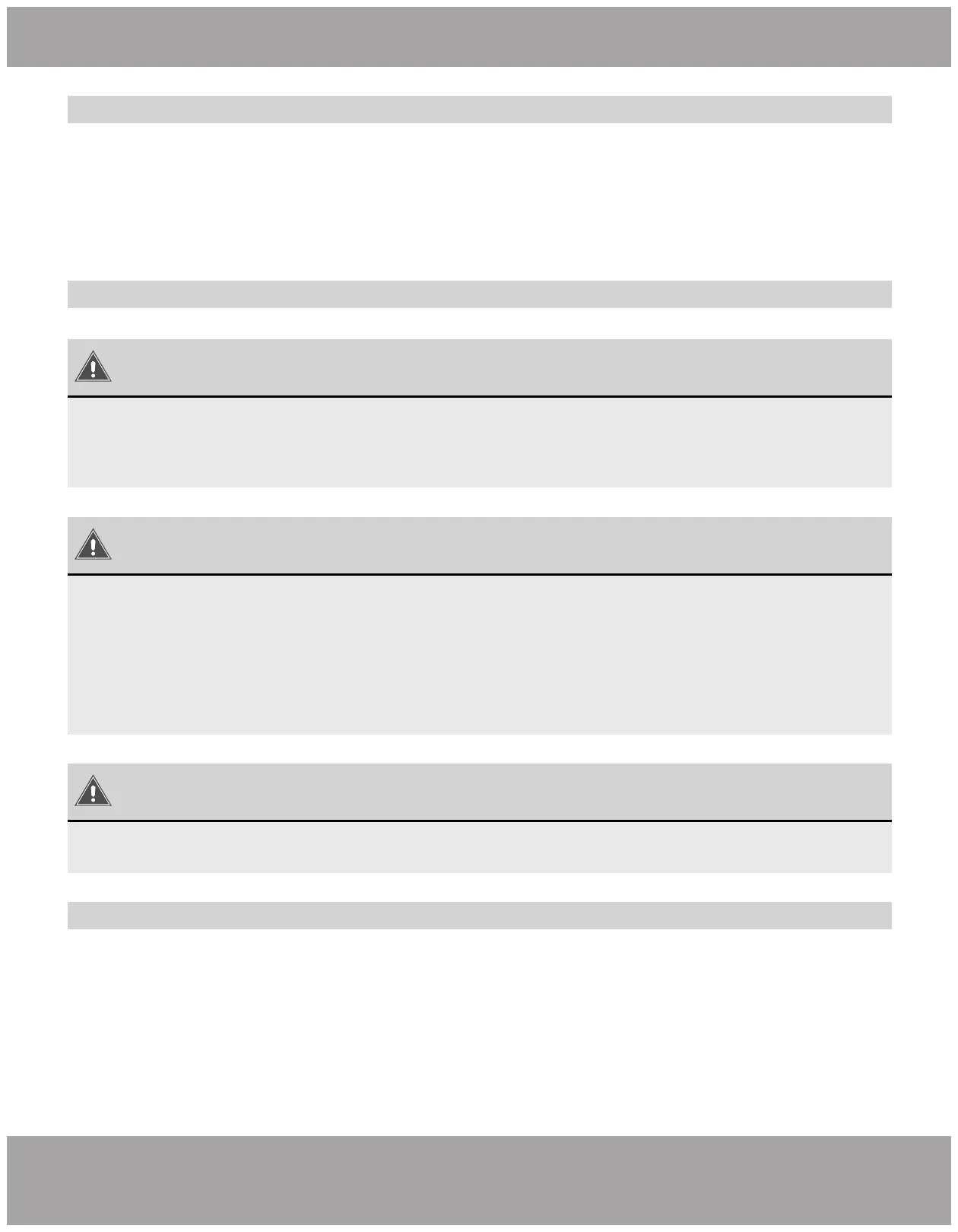Page 39 mrcool.com
Maintenance
Initial safety checks should include:
1) Safe discharge of capacitors to avoid the possibility of sparking;
2) No live electrical components and wiring should be exposed while charging, recovering or purging
the system;
3) The system is safely grounded.
Electrical Device Checks
1) Do not apply any permanent inductive or capacitance loads to the circuit without ensuring that
this will not exceed the permissable voltage and current permitted for the equipment in use.
2) Intrinsically safe components are the only types that can be worked on while live in the presence
of a flammable atmosphere. The test apparatus must be at the correct rating.
3) Replace components only with parts specified by the manufacturer. Other parts may result in the
ignition of refrigerant in the atmosphere from a leak.
Intrinsically Safe Component Repair
Sealed Component Repairs
ELECTRICAL SAFETY
Ensure that this system is installed using a disconnect box that meets national, state, and local
electrical and HVAC code requirements. The location of the disconnect box(es), number of
disconnect boxes needed, and distance from the unit(s) to the disconnect box(es) should be
handled in accordance with national, state, and local electrical and HVAC code.
ATTENTION
1) Electrical component casings should not be altered in such a way that the level of protection
is affected. This includes damage to cables, excessive number of connections, terminals not
made to original specification, damage to seals, incorrect fitting of glands, etc.
2) Ensure the apparatus is securely mounted.
3) Ensure the seals or sealing materials have not degraded in such a way that they no longer
serve the purpose of preventing the ingress of flammable atmospheres. Replace parts in
accordance with manufacturer specifications.
NOTICE
The use of silicon sealant may inhibit the effectiveness of some types of leak detection
equipment. Intrinsically safe components do not have to be isolated prior to working on them.
